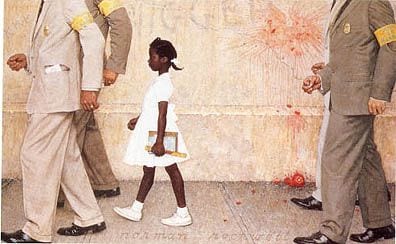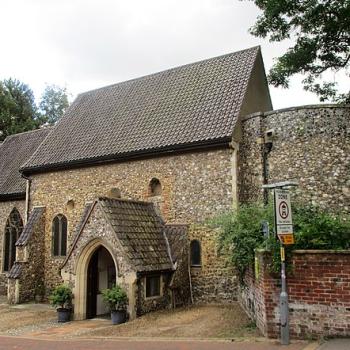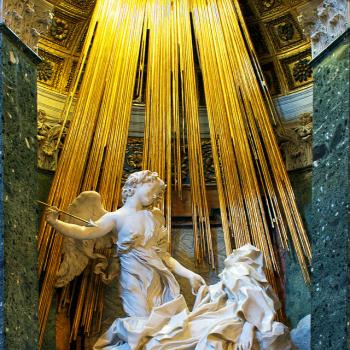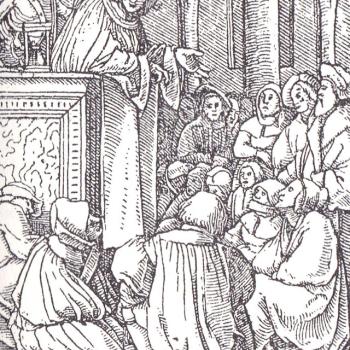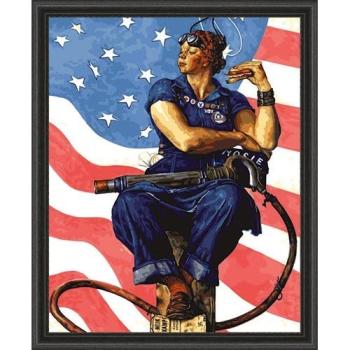It was fifty-nine years ago today, on the 14th of November in 1960, that six-year old Ruby Bridges integrated the New Orleans Elementary School district.
The photographs from that time are hard to witness. But, Norman Rockwell’s painting of that time, The Problem We All Live With, well, it raises the stakes in ways we all need to pause and consider.
For me it all takes me back to the early 2000s. It was sometime during our first couple of years of what would be our fourteen years in New England. Precisely when, I no longer recall. Maybe as early as 2001. Possibly as late as 2003.
Jan and auntie and I were still just getting the lay of the land, and as we could we explored.
Naturally enough pretty quickly preferences began to emerge: Cape Cod is beautiful and haunting. And we found the coastal ruggedness of Maine and those picture postcard villages even more compelling. Okay, the picture postcard villages are everywhere in New England. But when they cling to the coast, my goodness!
However, most of all, we loved the mix of culture and countryside we found in the Pioneer Valley and the Berkshires. On our little escapes from our regular routines, we returned to far Western Massachusetts and southern Vermont more often than most other possible destinations. It would prove to be a constant in our time there.
Speaking of those picture postcard villages, one bright summer day we were driving through Stockbridge, exploring the area around Tanglewood, when we saw a sign announcing the Norman Rockwell Museum.
Now, I was raised to think Rockwell wasn’t really an artist, or at least not a great one. Certainly no one to pay as much attention to as he had in our popular American imagination.
I believe this was in the air for intellectuals and those standing in that general vicinity for a couple of reasons. Rockwell’s thematic choices mostly of small town Americana together with his use of an often-humorous realism just ran against the grain of mid and late twentieth centuries intellectual aesthetics.
More challenging, I think, and perhaps a more authentic critique, was his free use of sentimentality. I’m not a fan of the sentimental. And that continues a thread for me. It’s a dangerous tool, used too often to manipulate, not to liberate.
However, by the time we found ourselves in Stockbridge, Rockwell had more or less been rehabilitated, at least, again, within the circles Jan and I tend to move. The pure artistry of his work just cannot be challenged. And while Rockwell could be and often was sentimental, he also touched much deeper currents of the human heart.
Clearly he understood love as something more than sentiment, and his paintings celebrated human nobility over and over again. So, we saw the sign and there was no hesitation. We drove up to the museum, parked, paid our entrance fee and walked in to gawk at the collection of almost six hundred paintings.
While there can be no doubt Rockwell loved the sweet, and did tumble into sentimentality with regularity, I have to say, when we walked into the room that displayed Rockwell’s series on race, standing in front of his painting “The Problem We All Live With,” I simply wept.
Here was what love looks like.
In that painting he called us to both our shadows and to our nobility. If someone doesn’t think that’s real art, I don’t know what they think real art is.
Who are we?
Who are we when we surrender into the mystery of our interrelatedness?
What might we be?
When we are real.
Who are we when we love?
So much hangs in how we answer…


